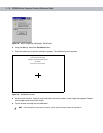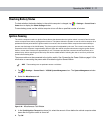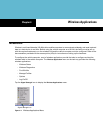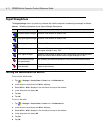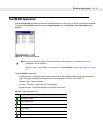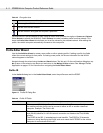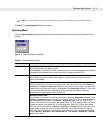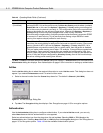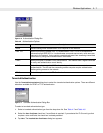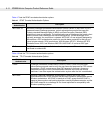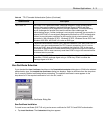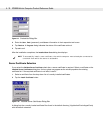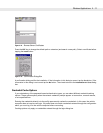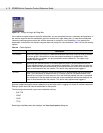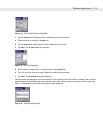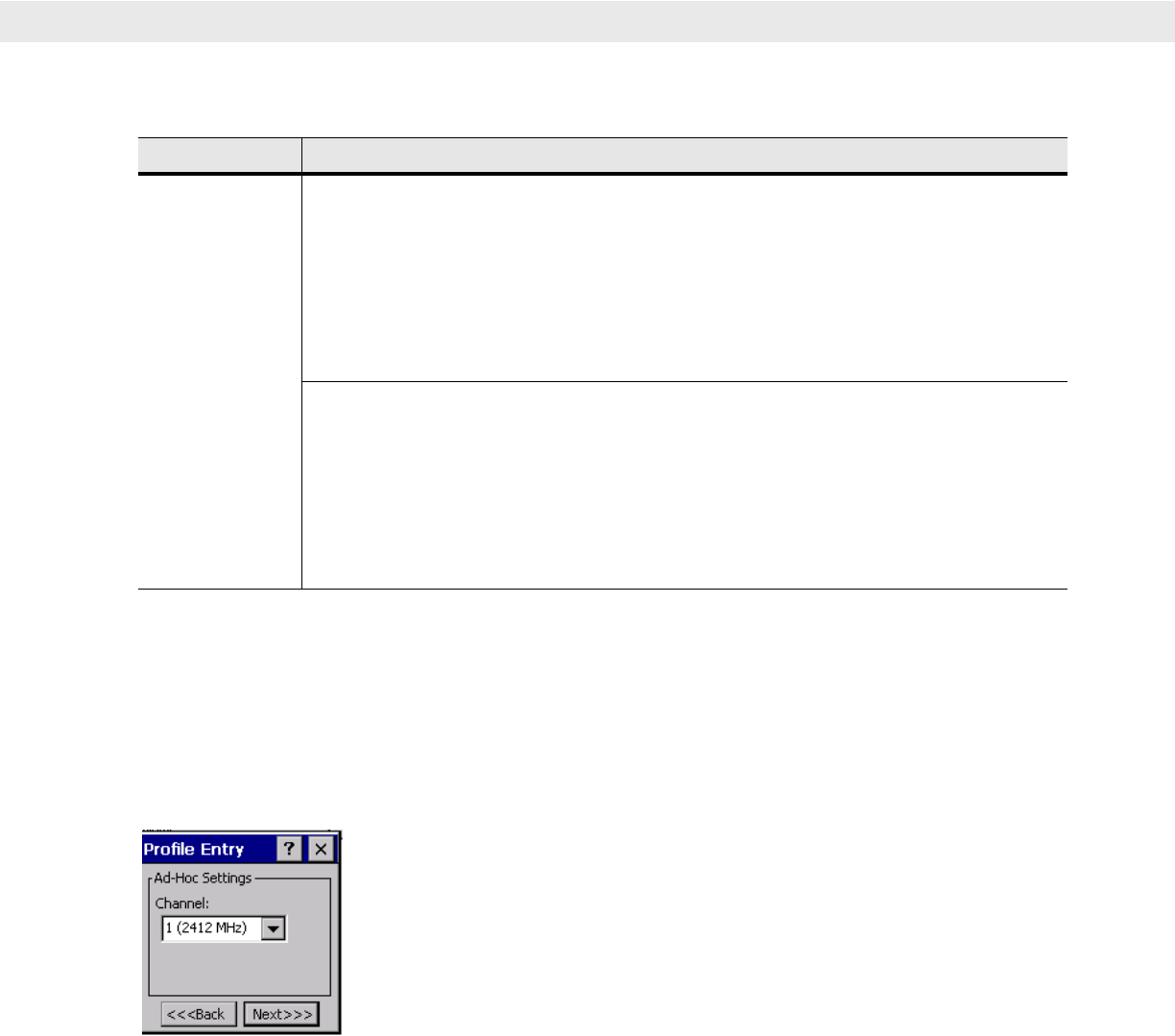
4 - 6 VC5000 Vehicle Computer Product Reference Guide
Tap Next. If Ad-Hoc mode was selected the Ad-Hoc dialog box displays. If Infrastructure mode was selected the
Authentication dialog box displays. See Authentication on page 4-6 for instruction on setting up authentication.
Ad-Hoc
Use the Ad-Hoc dialog box to select the required information to control Ad-Hoc mode. This dialog box does not
appear if you selected
Infrastructure mode. To select Ad-Hoc mode:
1. Select a channel number from the Channel drop-down list. The default is Channel 1 (2412 MHz).
Figure 4-5
Ad-Hoc Settings Dialog Box
2. Tap Next. The Encryption dialog box displays. See Encryption on page 4-15 for encryption options.
Authentication
Use the Authentication dialog box to configure authentication. If you selected Ad-Hoc mode, you can only
select
None because Ad-Hoc authentication is not supported.
Select an authentication type from the drop-down list and tap
Next. Selecting PEAP or TTLS displays the
Tunneled dialog box. Selecting None, EAP TLS, or LEAP displays the Encryption dialog box. See Encryption on
page 4-15 for encryption options. Table 4-6 lists the available authentication options.
Country
(Continued)
For a single profile that can be used in multiple countries, but with infrastructure that does
not support 802.11d, set the profile country to
Allow Any Country, and de-select (uncheck)
Enable 802.11d. In this case, the Options > Regulatory > Country setting must always be
set to the country the device is currently in. This configuration option is the most efficient
and may be chosen for use with any infrastructure. However, the
Options > Regulatory >
Country setting must be manually changed when a new country is entered.
Note that using a single profile in multiple countries implies that there is a common ESSID
to connect to in each country. This is less likely than having unique ESSIDs in each
country, this requires unique profiles for each country.
For additional efficiency when using multiple profiles that can be used in multiple
countries, the country setting for each profile can be set to a specific country. If the current
country (found via 802.11d or set by
Options > Regulatory > Country when 802.11d is
disabled) does not match the country set in a given profile, then that profile is disabled.
This can make profile roaming occur faster. For example, if two profiles are created and
configured for Japan, and two more profiles are created and configured for USA, then
when in Japan only the first two profiles are active, and when in USA only the last two are
active. If they had all been configured for
Allow Any Country, then all four would always
be active, making profile roaming less efficient.
Table 4-5
Operating Mode Fields (Continued)
Field Description



